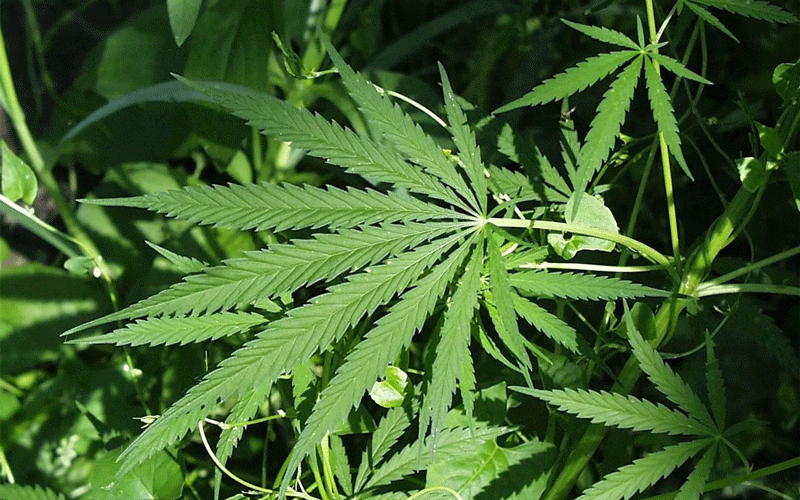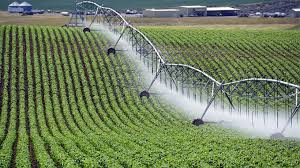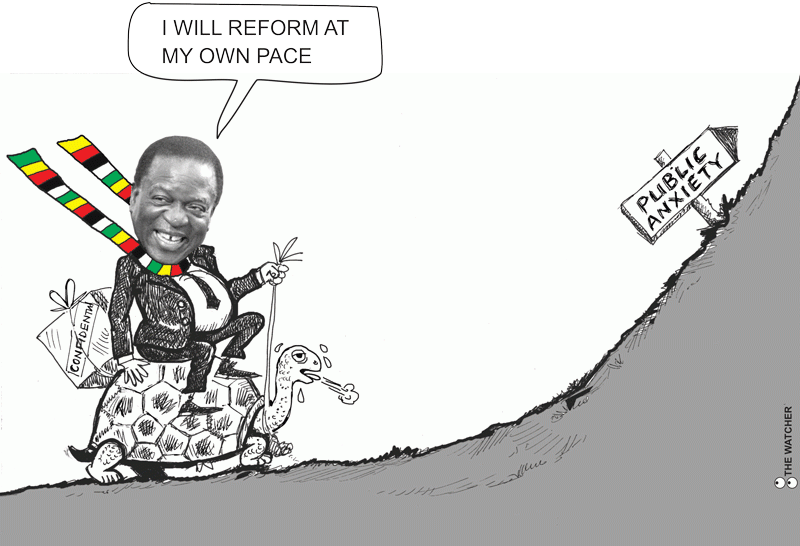
INDUSTRIAL hemp, also known as cannabis sativa, is not intoxicating.This means that it is virtually impossible to get a "high" when using it, in whatever form.
Due to this quality, the plant is cultivated in a number of countries for a wide array of economic benefits.
In Zimbabwe, hemp for medicinal purposes was legalised in 2018, making the country one of only 10 African nations to take that stance. Thereafter, farming for other purposes, including textiles, was permitted,through Statutory Instrument 218, of 2020 (CAP. 18:24 Agricultural Marketing Authority, Industrial Hemp Regulations).
Although most countries, which farm the crop are in the northern hemisphere, the plant is more suited to the tropical and sub-tropical climate of Sub-Saharan Africa.
Replacing cotton with hemp, or adding to textile sector growth
One of the main reasons for the cultivation of hemp around the world, is the harvesting of textile-grade fibres. The outer part of a hemp's stems can be used to make textiles.
These are further processed for the manufacturing of rope, clothing, shoes, the interior upholstery of vehicles, etc. The benefits, which hemp has over cotton, show the need for Zimbabwean cotton farmers to evaluate, which of the two is more viable, for the local setting. Some of the advantages of hemp over cotton are explained below.
It grows faster. Whilst hemp can fully grow within 12 weeks, reaching up to five metres in height, cotton needs twice the time (21 to 25 weeks), for it to reach maturity. This means that it is possible for a farmer to harvest hemp twice, within one cotton season.
- Mavhunga puts DeMbare into Chibuku quarterfinals
- Bulls to charge into Zimbabwe gold stocks
- Ndiraya concerned as goals dry up
- Letters: How solar power is transforming African farms
Keep Reading
Hemp requires half the land for the same yield as cotton. Due to its slender shape, it requires less space and, therefore, produces more per hectare than cotton. On an equal area of land, a farmer will harvest twice as much fibres from hemp, than cotton.
Hemp needs only 2 100 litres of water for a kilogramme of fibre-grade textiles. This is less than a quarter of cotton's water requirements. Cotton is a "thirsty" crop which is known to deplete water from the soil it is planted on, diminishing ground water tables and in some cases, leading to desertification. A study undertaken by the Stockholm Environment Institute, revealed that, it can take as much as 10 000 litres of water, to produce 1kg of cotton (the equivalent of a single T shirt).
Hemp is a carbon negative plant, whilst cotton is not. A tonne of cultivated hemp can remove 1,63 tonnes of CO2 from the atmosphere, whilst cotton typically produces two to four tonnes of CO2 per hectare. Hemp permanently absorbs CO2 in its roots and stems. When processed into fibres for textiles, for example, the carbon remains within the cloth for the rest of the fabric's life. One hectare of industrial hemp can absorb up to 22 tonnes of CO2, making it one of the fastest methods of converting carbon dioxide into biomass.
It is reported that, globally, 25% of insecticides and 10% of all agrochemicals, are from the cotton industry. The intensive use of such chemicals lead to soil degradation and environmental pollution. Hemp, however, rarely needs herbicides, as its dense canopy covers the ground completely, giving no room for weeds to thrive.
The plant also has minimal needs for pesticides, since its bitter nature acts as a pest repellent. It also needs fewer fertilisers, when compared to cotton and other commercial crops. This also infers cost-savings for local farmers who may decide to venture into cultivating the crop.
Additionally, it is possible to replant hemp, for several consecutive years, without degrading soil quality or reducing the yield. The plant is known to draw toxins from the soil, whilst its leaves and shavings can be ploughed back, to work as a natural fertiliser. This means that hemp enriches the soil in which it grows, unlike several commercial crops. On the other hand, cotton is known to severely deplete the land of its fertility, if repeatedly cultivated.
Ultimately, textiles made from hemp, are more durable, encourage better aeration and easier to process (dye) than cotton.
Such benefits of hemp, reveal the need to tentatively farm the crop, as a cotton substitute in Zimbabwe. In order to encourage rapid development of the sector, the army, police, nurses and students in government schools, can also provide a ready market for Zimbabwean produced hemp textiles. This would mean that, these institutions may be regulated to use hemp fabric for their uniforms.
Other uses
Almost all components of the plant can be used or processed for various purposes. This gives it an edge over most key crops.
Food and food exports
Hemp seeds are highly nutritious, having 20-25% proteins, 25-35% fats, 10-15% fibre, alongside several vitamins and minerals. Hemp seed exports are in demand, in advanced economies.
Consumers use them in baked bread, cereal, salads, protein-shakes, etc. Users of hemp food products maintain that they add to the diversity of human diet. The carbon negative and environmentally friendly qualities of the plant, also mean that it is one of the rare, sustainable food sources, in modern agriculture.
Innovation is also a part of the hemp food value-chain. Products,such as hemp tofu, flours, and muesli, are adding to the growing list of foods made from the plant.
Zimbabwean hemp exports, which will be described later on, have not managed to incorporate non-medicinal hemp products, and have a good opportunity to grow, if they diversify into food and other hemp products.
A number of supermarkets in the US and other advanced economies are preparing to have hemp products on their shelves. Local processors of the crop, therefore, need to be prepared to capture a larger chunk of these markets, as soon as demand is presented.
Additionally, the crop earns a higher price per hectare than maize, soya beans and other commercial crops. This is another clear advantage that local farmers can utilis, as they cultivate hemp for the export market.
Fuel and energy
The whole hemp plant can be fermented to produce ethanol, which can be used as motor vehicle fuel. Ethanol is also usable for power stations, which can generate electricity to the national grid. Moreover, hemp can be used to manufacture bio-diesel.
In this regard, if the government is determined to promote the cultivation of the plant, mandatory blending for diesel engines can be introduced, with local hemp serving as the source of bio-diesel supply.
Such policies will have a direct impact on local employment and economic growth numbers, as they lead to the development of new local industries and supply chains.
Hemp fibres can also be used to produce cheaper and environmentally friendly vehicle batteries.
A study by Dr. David Mitlin of Clarkson University, in New York, compared hemp batteries to graphene ones, and concluded that the plant is similar to graphene in terms of energy storage and weight.
Additionally, the research outlined that hemp batteries would be cheaper to manufacture. Further advances into research of hemp's energy storage capabilities may lead to breakthroughs, such as, the replacement of lithium batteries in electric vehicles.
Plastics
Hemp can be used to make 100% biodegradable plastics, unlike those manufactured from oil, coal and natural gas. Such plastics degrade and become part of the natural environment, only after a few months.
Additionally, hemp plastics do not contain toxins, which are harmful when the products are used for serving food, or when they are burnt and the smoke is inhaled.
Plastics made from the plant are also much stronger than the conventional ones. Due to their resilient nature, as far back as 1941, car maker, Henry Ford, manufactured a vehicle partly made from hemp plastics, in an attempt to create a light, fast and fuel efficient car.
Bruce Dietzien, the founder of DrawdownHemp and Renew Sportcars,also made a vehicle made of 100% hemp plastics in 2016, which reportedly has a body, which is 10 times stronger than steel and is extremely dent resistant.
Several prominent commercial vehicle manufacturers also use hemp plastics for a number of car components (dashboards, windscreens, arm rests, etc). These include; Mercedes Benz, Audi, Peugeot, BMW, Volvo and Volkswagen.
Medicines
The plant is used in the manufacturing of a number of medicines, such as analgesics (painkillers), anti-depressants, sleeping medication, anti-convulsion drugs, etc.
There are hundreds, if not thousands more, of household and industrial applications where hemp products can be used. These include, animal feed, building material, paints, cosmetics, paper, etc.
Zimbabwe
Local hemp production doubledin 2022, although itreached a mere 40 tonnes. Exports were mostly destined to Switzerland. The country has only 27 cultivators, 18 merchants and 15 breeders.
Lack ofinternationally-recognised testing centres (labs), seed varieties suitable for the local climateand poor domestic demand, are mentioned as the major challenges besetting the sector.
An opportunity exists for the diaspora-led consortium, which signed a biotechnology deal with the Zimbabwe Investment and Development Agency (Zida), in September, to assist regarding some of these issues.
Offtake agreements (purchasing commitments) are about to be finalised with the United Kingdom’s NHS, other European Union (EU) countries and Canada, which are all interested in the country’s medicinal products.
However, the lack of EU compliant certifications and a testing centre can result in the collapse of negotiations.Ultimately, both government and business have much work to do, for more local farmers to come on board, as the numbers are still poor.
The sector is likely to expand when farmers decide tocultivate the crop for textiles and other uses, as outlined before.
China
The world's leading producer is China, which accounts for about half of global production. Ingestion of hemp in whatever form, including medicine, is prohibited in the country.
However, China is a top exporter of hemp-based medicines. Hemp-based textiles and cosmetics can be sold in both domestic and export markets.
The national army (Peoples Liberation Army), wears fabrics made from hemp, which providesdemand-support to the local farmers and processors.
Some Chinese firms havealso established businesses in the US and Canada, with the goal of exporting their hemp there for further processing, whilst having access to theend consumers in these advanced markets.
China is also the world's largest exporter of hemp paper and bio-composites (hemp plastics). Back in 2016, the country's 13th, five-year plan, articulated the vision to plant as much as 1,3 millionhectares of hemp for textiles by 2030.This is aimed at replacing cotton with more sustainable alternatives.
Tutani is an entrepreneur and political economy analyst. — [email protected].











